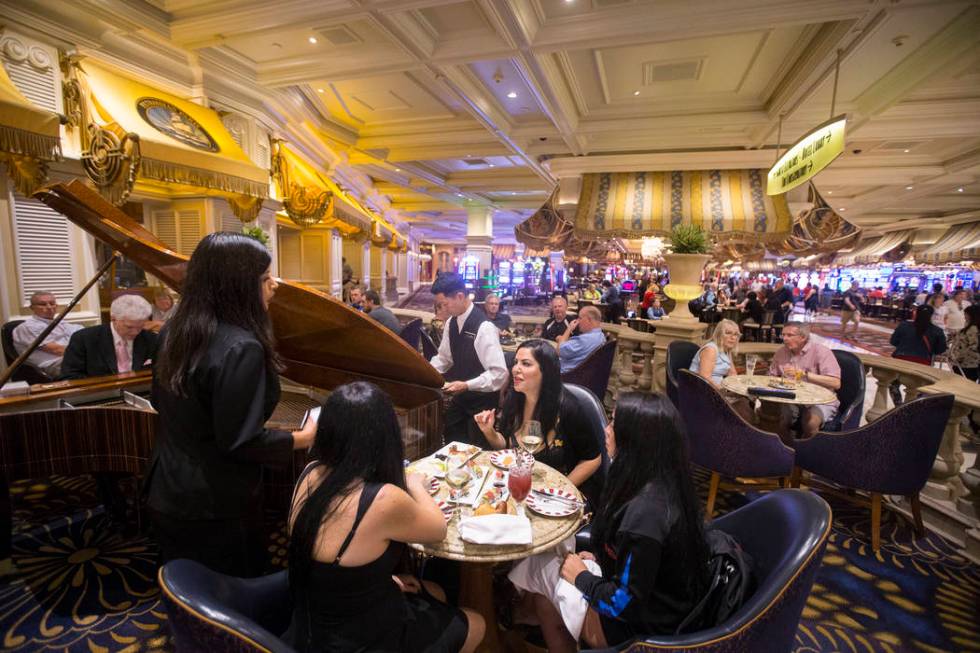20 years ago, Bellagio set the culinary stage for Las Vegas

In the Las Vegas dining world’s journey from 99-cent shrimp cocktails to Michelin stars, few milestones are as important as the openingof Bellagio.
“I think Bellagio was a game changer,” said Michael Mina, who was part of the unprecedented culinary lineup that opened the resort.
In the Las Vegas of 1998, so-called celebrity chefs were limited to Wolfgang Puck at the Forum Shops at Caesars, Emeril Lagasse at the MGM Grand and, to a lesser extent, Jean-Louis Palladin at the Rio. But as one local television reporter noted in a special on the resort’s opening, Bellagio would be home to seven James Beard Award winners. What’s most interesting about that original collection of restaurants, however, is that it emerged almost as an afterthought in Steve Wynn’s transformative resort.
“Originally the idea was that the only outsourced restaurants were going to be Le Cirque and Circo,” explained Elizabeth Blau, who helped craft the deal between Steve Wynn and the legendary New York French restaurant and its sister Italian eatery.
Wynn was so impressed with Blau that he hired her to round out his collection. She began by convincing her boss to turn his planned Retail Cafe in Bellagio’s shopping corridor into an outpost of Todd English’s Boston hot spot, Olives. Jean-Georges Vongerichten, who was being courted to open a French restaurant in The Mirage, fell in love with Bellagio during a tour and convinced Wynn and Blau to entrust him with its steakhouse. One by one, other chefs fell into place: Mina for the seafood restaurant, Nancy Silverton consulting on bread, even famed Paris caviar company Petrossian to run the piano bar.
This lineup of talent was faced with some very unexpected challenges. Blau recalls trying to explain the buffet to decorated French pastry chef Jean-Philippe Maury.
“I’m, like, ‘OK, Jean-Philippe, we need, like, Rice Krispies treats and blondies and brownies.’ And he was, like, ‘What is dis blondie?’ And I was, like, ‘It’s like a brownie that’s white.’ ”
Grant MacPherson, who served as executive chef for the entire resort, says the property wasn’t designed to serve the 32,000 meals a day it was providing right out of the gate. He recalls expensive china breaking in overcrowded dishwashing rooms and chefs unable to find the products they needed to serve their guests.
“Sometimes you’d be coming down one of the hallways and a chef would be looking for lobsters. I’m not exaggerating. ‘Where’s my lobsters?’ There’d be chefs going out to trucks because we had an eight-hour wait to get products inside.”
Despite the hiccups, the program was a hit. MacPherson says it topped $1 million in sales the first day. Within 18 months it was turning a profit, proving that food and beverage could actually be a moneymaker for a casino. And according to Ari Kastrati, senior vice president of food and beverage strategy for MGM Resorts International, things haven’t slowed down since.
“Bellagio was the holy grail of the food and beverage industry back then, and it still really carries the torch for being innovative and being ahead of the trend.”
Contact Al Mancini at amancini@reviewjournal.com. Follow @AlManciniVegas on Twitter.